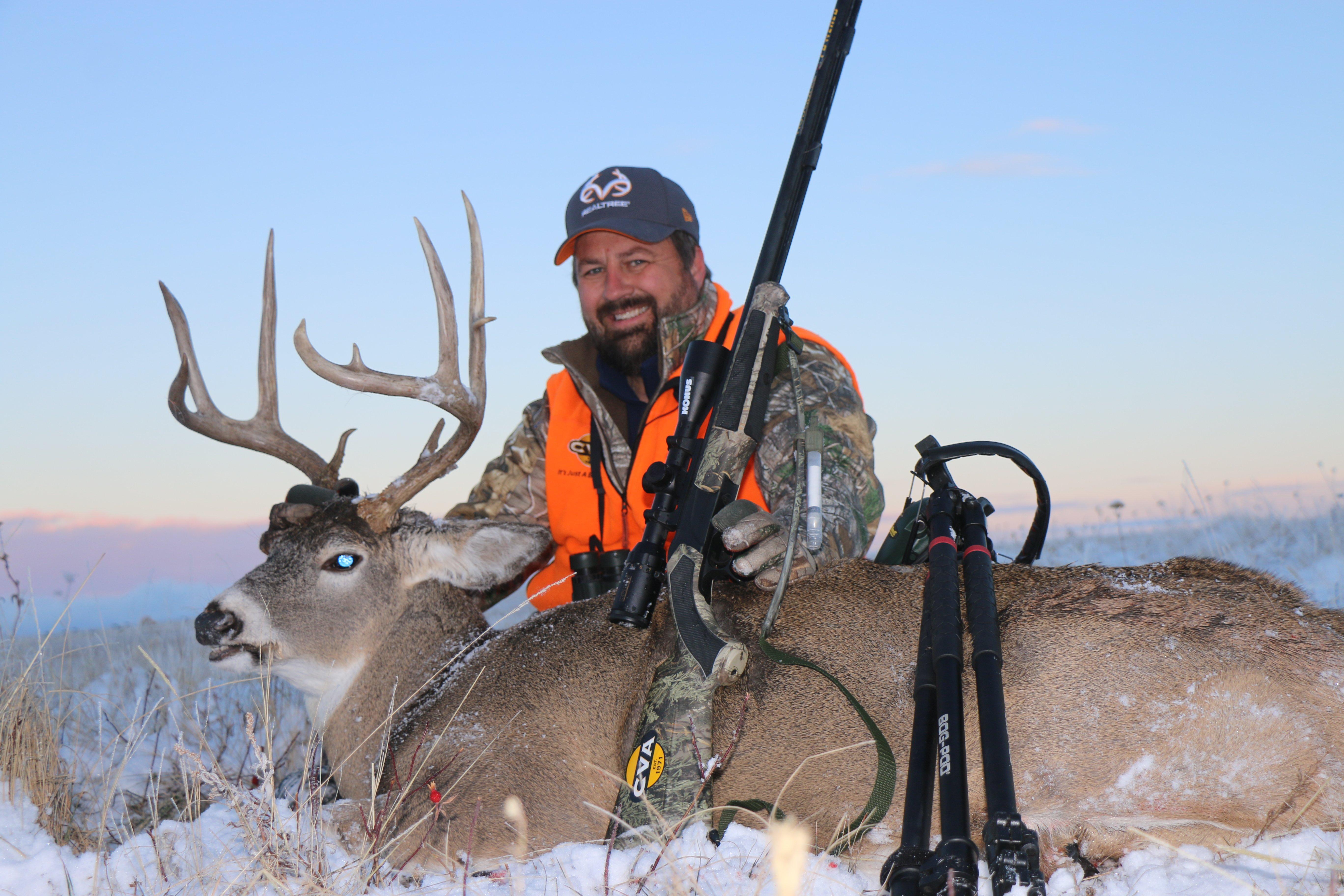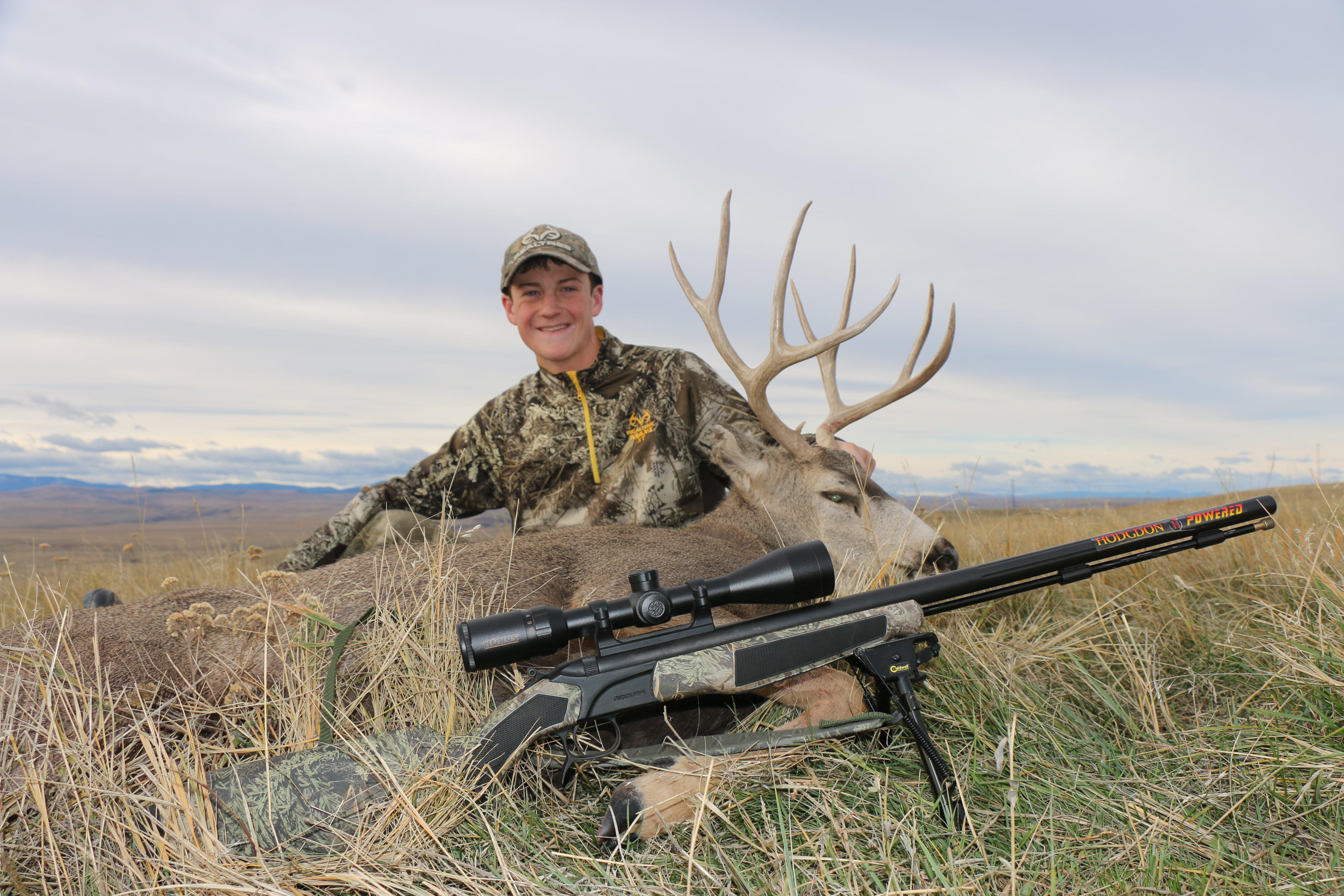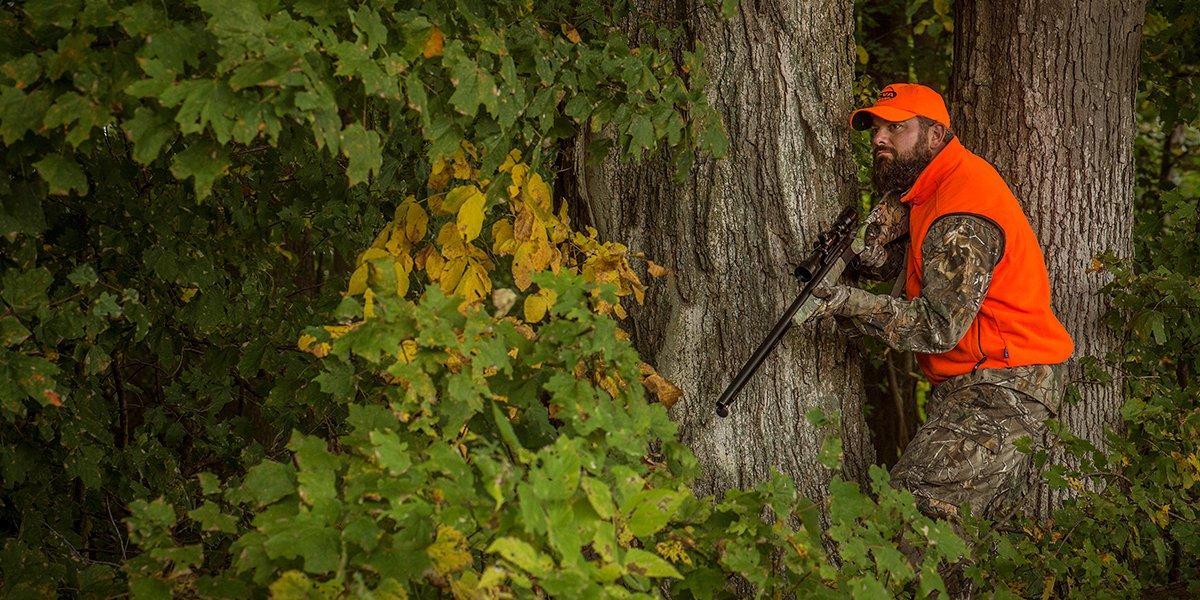Get the Most Out of Your Muzzleloader
Chad Schearer has hunted with a muzzleloading rifle on five continents over the past 20 years. Add that to being CVA's director of media relations and it adds up to significant experience with a muzzleloader.
Schearer shared his top tips for getting the most out of your muzzleloader.
1. The most important thing in muzzleloading is to be consistent, he said. Consistent in how you load your gun, how you swab between shots - everything needs to be consistent at the range and carry over to the field. Schearer said he always starts off by firing two primers through his clean and unloaded in-line muzzleloader to clear any solvents or lubricants and to foul the barrel. I've found the most consistency if I just use a saliva patch to swab after my shot, he said. I just dampen the patch and run it down the barrel. A little water will work too, but he steers clear of solvents because they tend to remove too much of the fouling - and you're not likely to have solvent in the field. Consistency. And if you use saboted bullets, the between-the-shots swabbing is more important to clear the plastic that melts to your barrel. Again, he says a saliva-moistened patch will suffice.
2. Never use Bore Butter or other lubricants on modern in-line saboted bullets or PowerBelt bullets. They don't need lubrication, Schearer said, and it will cause accuracy issues because you aren't likely to get consistent performance. Consistency, again.
3. Mark your ramrod so you know it is properly loaded. Start with a clean muzzleloader and load it carefully, assuring the bullet is seated properly (If using powder pellets, don't crush them. Never crush them.) Once you're sure the bullet is seated properly on the powder or pellets, mark a line around your ramrod with a gray Sharpie, nail polish, something that will last. That provides a quick visual check you've reloaded properly. One issue muzzleloader hunters deal with is the build up of a carbon ring in the barrel after a shooting session. If the ring isn't swabbed away it can build to a point where it stops the bullet from being seated properly on the powder, creating a short-loading situation which can adversely affect accuracy. It also lets you quickly check to see if there is already a load in the barrel.
4. Match your bullet to the game you're going to hunt. Schearer shoots PowerBelt bullets and if he's hunting from a treestand or likely to be taking shots of 100 to 150 yards or less, he'll choose an AeroLite bullet designed to be used with 100 grains of powder. On the other hand, if he's hunting elk, he'll chose a 270-grain or 300-grain PowerBelt bullet, which is a little harder and very effective on elk, with 150 grains of IMR White Hot pellets.
5. This relates to No. 4, but know the ballistics of your rifle, powder and bullet combination. Don't assume your scope's ballistic reticle will have you dead on. If you think you may need to take 200-yard shots while hunting, practice at 200 yards, not just at 100 and assume you know what the bullet will do at 200.
CVA muzzleloaders found here.
6. If you travel to hunt, double-check your zero on arrival. Not just for possible bumps to your rifle and/or scope along the way, but also for changes in elevation. Say you sight your gun in Mississippi and are heading to Colorado to hunt elk at 10,000 feet. That higher elevation can change the point of impact - significantly, Schearer said.
7. Know the state's muzzleloading regulations before you go. Requirements change state to state. Colorado, for instance, requires use of loose powder and allows only open sights. Some states require an exposed breech plug (CVA's Northwest line of muzzleloaders - with Realtree APG HD stocks - meet this requirement). Also some states don't allow saboted bullets. Know the regulations.
More on Chad Schearer. More Realtree guns and shooting. Follow Realtree on Facebook.
Editor's note: This Realtree.com article was first published Sept. 25, 2017.









